ART NEWS:May 02
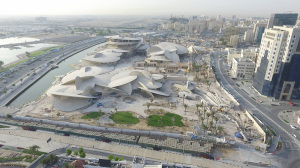 Designed Jean Nouvel, the upcoming National Museum of Qatar is inspired by the desert rose and will combine historic objects and contemporary influences, opening up a dialogue around the impact of rapid change. This museum will give voice to Qatar’s heritage whilst celebrating its future. The National Museum of Qatar is built around Sheikh Abdullah bin Jassim Al Thani’s original palace, one of Qatar’s most recognizable landmarks and a building that served as a monument to a historic way of life in Qatar. This palace has a unique historical significance for the State of Qatar and has been recently fully restored. The architectural study which initially was coupled with the programmatic study, brought to light the underlying paradox of this project: to show what is hidden, to reveal a fading image, to anchor the ephemeral, to put the unspoken into words, to reveal a history which has not had the time to leave a mental imprint; a history that is a present in flight, an energy in action. The palace will be a fitting central exhibit within the National Museum when it opens.
Designed Jean Nouvel, the upcoming National Museum of Qatar is inspired by the desert rose and will combine historic objects and contemporary influences, opening up a dialogue around the impact of rapid change. This museum will give voice to Qatar’s heritage whilst celebrating its future. The National Museum of Qatar is built around Sheikh Abdullah bin Jassim Al Thani’s original palace, one of Qatar’s most recognizable landmarks and a building that served as a monument to a historic way of life in Qatar. This palace has a unique historical significance for the State of Qatar and has been recently fully restored. The architectural study which initially was coupled with the programmatic study, brought to light the underlying paradox of this project: to show what is hidden, to reveal a fading image, to anchor the ephemeral, to put the unspoken into words, to reveal a history which has not had the time to leave a mental imprint; a history that is a present in flight, an energy in action. The palace will be a fitting central exhibit within the National Museum when it opens.
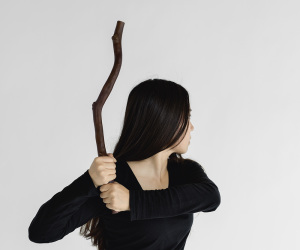 Throughout her career, Saron Lockhart has immersed herself in communities to make works that uniquely capture groups and individuals through studied, choreographed compositions. The points of departure for Saron Lockhart’s solo exhibition “Movements and Variations” stem from her ongoing interest in portraiture, representation, movement, labour and the power of women. Comprising casts of manzanita, buckeye, and black walnut sticks that Lockhart gathered in California’s Sierra Nevada Mountains, “A Bundle and Five Variations” (2018) is the artist’s first engagement with bronze sculpture. Lockhart previously featured similar sticks in her film “Little Review” (2017). In collaboration with Ravi GuneWardena from the Sogetsu School of Ikebana, these sculptures have been grouped into six distinct arrangements, five of which are derived from the larger bundle on view. The exhibition also engages with the politically charged history of the site, a former tobacco factory that was, at times, staffed by an entirely female workforce. The show includes a selection of images from the archives of the well-known photo studio Botti e Pincelli, owned by the City of Modena. Info: Curators: Adam Budak and Diana Baldon, Assistant Curator: Chiara Dall’Olio, Fondazione Fotografia Modena MATA – Ex Manifattura Tabacchi, Via Manifattura Tabacchi 83, Modena, Duration: 7/4-3/6/18, Days & Hours: Wed-Fri 15:00-19:00, Sat-Sun 11:00-19:00, www.fondazionefotografia.org
Throughout her career, Saron Lockhart has immersed herself in communities to make works that uniquely capture groups and individuals through studied, choreographed compositions. The points of departure for Saron Lockhart’s solo exhibition “Movements and Variations” stem from her ongoing interest in portraiture, representation, movement, labour and the power of women. Comprising casts of manzanita, buckeye, and black walnut sticks that Lockhart gathered in California’s Sierra Nevada Mountains, “A Bundle and Five Variations” (2018) is the artist’s first engagement with bronze sculpture. Lockhart previously featured similar sticks in her film “Little Review” (2017). In collaboration with Ravi GuneWardena from the Sogetsu School of Ikebana, these sculptures have been grouped into six distinct arrangements, five of which are derived from the larger bundle on view. The exhibition also engages with the politically charged history of the site, a former tobacco factory that was, at times, staffed by an entirely female workforce. The show includes a selection of images from the archives of the well-known photo studio Botti e Pincelli, owned by the City of Modena. Info: Curators: Adam Budak and Diana Baldon, Assistant Curator: Chiara Dall’Olio, Fondazione Fotografia Modena MATA – Ex Manifattura Tabacchi, Via Manifattura Tabacchi 83, Modena, Duration: 7/4-3/6/18, Days & Hours: Wed-Fri 15:00-19:00, Sat-Sun 11:00-19:00, www.fondazionefotografia.org
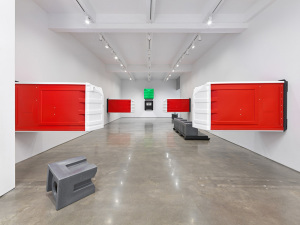 Andreas Slominski presents an installation comprising new wall reliefs and portable plastic toilets. On view for the first time in the United States, Slominski’s wall reliefs are constructed from the colorful side paneling of a specific model of German portable plastic toilet. Taking over the factory’s production line, the artist vacuum-formed maternal-themed found sculptures and symbolic natural and utilitarian objects, like rope and wood, into the high-density polyethylene panels. The complete, assembled toilets, the same model whose paneling is used for the artist’s wall reliefs, are unconventionally installed throughout the gallery. With their contrasting white pitched roofs and black bases, the toilets, especially in the bright primary colors chosen by Slominski, transform from ordinary utilitarian objects into playful sites of refuge. In their pristine state, shipped directly to the gallery from the manufacturer, they are imbued with a seductive materiality that belies their intended function. Info: Metro Pictures Gallery, 519 West 24th Street, New York, Duration: 26/4-25/5/18, Days & Hours: Tue-Sat 10:00-18:00, www.metropictures.com
Andreas Slominski presents an installation comprising new wall reliefs and portable plastic toilets. On view for the first time in the United States, Slominski’s wall reliefs are constructed from the colorful side paneling of a specific model of German portable plastic toilet. Taking over the factory’s production line, the artist vacuum-formed maternal-themed found sculptures and symbolic natural and utilitarian objects, like rope and wood, into the high-density polyethylene panels. The complete, assembled toilets, the same model whose paneling is used for the artist’s wall reliefs, are unconventionally installed throughout the gallery. With their contrasting white pitched roofs and black bases, the toilets, especially in the bright primary colors chosen by Slominski, transform from ordinary utilitarian objects into playful sites of refuge. In their pristine state, shipped directly to the gallery from the manufacturer, they are imbued with a seductive materiality that belies their intended function. Info: Metro Pictures Gallery, 519 West 24th Street, New York, Duration: 26/4-25/5/18, Days & Hours: Tue-Sat 10:00-18:00, www.metropictures.com
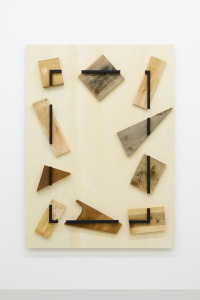 In Tomoko Nagai’s exhibition “Atelier in Peach and Rose Color, Magic” various motifs such as animals, young girls, colorful trees and mushrooms are scattered against backgrounds of forests or rooms that appear reminiscent of theater sets. All of her works harbor a unique spatiality in which a sense of liveliness as if having condensed the world of fantasy, complexly overlap with the layers of the image. Nagai employs various media such as a sculpture and installation as well as a painting within her practice. This results in diverse matiere and levels of intensity that become elements and rhythms that together constitute a single musical score. In sensing this music, we as viewers unwittingly find ourselves entering the narratives of her work. This exhibition features works created since 2006 as well as a selection of her latest works. Info: 8/Art Gallery, Tomio Koyama Gallery, Shibuya Hikarie 8F, 2-21-1 Shibuya, Shibuya-ku, Tokyo, Duration: 2-28/5/18. Days & Hours: Daily11:00-20:00, http://tomiokoyamagallery.com
In Tomoko Nagai’s exhibition “Atelier in Peach and Rose Color, Magic” various motifs such as animals, young girls, colorful trees and mushrooms are scattered against backgrounds of forests or rooms that appear reminiscent of theater sets. All of her works harbor a unique spatiality in which a sense of liveliness as if having condensed the world of fantasy, complexly overlap with the layers of the image. Nagai employs various media such as a sculpture and installation as well as a painting within her practice. This results in diverse matiere and levels of intensity that become elements and rhythms that together constitute a single musical score. In sensing this music, we as viewers unwittingly find ourselves entering the narratives of her work. This exhibition features works created since 2006 as well as a selection of her latest works. Info: 8/Art Gallery, Tomio Koyama Gallery, Shibuya Hikarie 8F, 2-21-1 Shibuya, Shibuya-ku, Tokyo, Duration: 2-28/5/18. Days & Hours: Daily11:00-20:00, http://tomiokoyamagallery.com
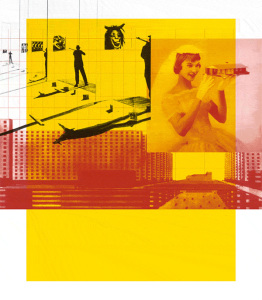 Fifty years after the opening of the legendary exhibition “50 Years of the Bauhaus”, the Württembergischer Kunstverein is undertaking a critical rereading of this exhibition. The rereading takes as its point of departure the socio–political upheavals of the 1960s and considers the Bauhaus, its historical contexts and the history(ies) of its reception from today’s perspective. The idea of the Bauhaus as a self–contained, homogeneous system is to be challenged, as are those narratives that negotiate the Bauhaus and Modernism as unquestioned synonyms of progress, freedom and democracy. Instead, at issue are the ambivalences inscribed in both, as for example with regard to totalitarianism and colonialism. The exhibition “50 Years after 50 Years of the Bauhaus 1968”, which extends over the new and old buildings of the Stuttgart Kunstgebäude (art building), follows four thematic strands, including numerous disgressions and byways. Some of these digressions had been developed specifically for the exhibition by a number of artists and curators, forming a third level. The exhibits include both historical and contemporary works, and documents from the fields of fine arts, literature, photography, film, design, architecture and urban development. Info: Württembergischer Kunstverein Stuttgart , Schlossplatz 2, Stuttgart, Duration: 5/5-23/9/18, Days & Hours: Tue & Thu-sun 11:00-18:00, Wed 11:00-20:00, www.wkv-stuttgart.de
Fifty years after the opening of the legendary exhibition “50 Years of the Bauhaus”, the Württembergischer Kunstverein is undertaking a critical rereading of this exhibition. The rereading takes as its point of departure the socio–political upheavals of the 1960s and considers the Bauhaus, its historical contexts and the history(ies) of its reception from today’s perspective. The idea of the Bauhaus as a self–contained, homogeneous system is to be challenged, as are those narratives that negotiate the Bauhaus and Modernism as unquestioned synonyms of progress, freedom and democracy. Instead, at issue are the ambivalences inscribed in both, as for example with regard to totalitarianism and colonialism. The exhibition “50 Years after 50 Years of the Bauhaus 1968”, which extends over the new and old buildings of the Stuttgart Kunstgebäude (art building), follows four thematic strands, including numerous disgressions and byways. Some of these digressions had been developed specifically for the exhibition by a number of artists and curators, forming a third level. The exhibits include both historical and contemporary works, and documents from the fields of fine arts, literature, photography, film, design, architecture and urban development. Info: Württembergischer Kunstverein Stuttgart , Schlossplatz 2, Stuttgart, Duration: 5/5-23/9/18, Days & Hours: Tue & Thu-sun 11:00-18:00, Wed 11:00-20:00, www.wkv-stuttgart.de
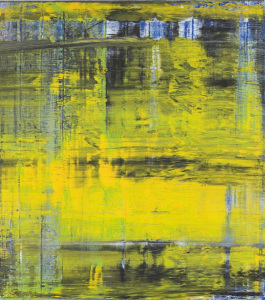 The exhibition “ARTIST ROOMS: Gerhard Richter” includes significant examples selected from Richter’s wide-ranging practice over the past five decades. The exhibition opens with a series of works where Richter experiments with abstraction and the impact of photographic and digital reproduction. A group of four large tapestries, “Abdu”, “Iblan”, “Musa”, and “Yusuf” (all 2009), are based on Richter’s “Abstract Painting” (724-4) (1990). Each tapestry reproduces a quarter of the painting, mirroring it and repeating it four times to produce Rorschach-like visual suggestions. The exhibition culminates with a spectacular presentation of “4900 Colours” (2007) in the John Hansard Gallery’s new seven-metre tall prism-shaped space, the work is composed of 196 panels, each including 25 coloured squares. These panels are arranged from floor to ceiling in a manner that engulfs visitors in colour and corresponds with Richter’s “Cologne Cathedral Window” (2007). Info: John Hansard Gallery, 142-144 Above Bar Street, Southampton, Duration: 12/5-18/8/18, Days & Hours: Daily 10:00-17:00, www.jhg.art
The exhibition “ARTIST ROOMS: Gerhard Richter” includes significant examples selected from Richter’s wide-ranging practice over the past five decades. The exhibition opens with a series of works where Richter experiments with abstraction and the impact of photographic and digital reproduction. A group of four large tapestries, “Abdu”, “Iblan”, “Musa”, and “Yusuf” (all 2009), are based on Richter’s “Abstract Painting” (724-4) (1990). Each tapestry reproduces a quarter of the painting, mirroring it and repeating it four times to produce Rorschach-like visual suggestions. The exhibition culminates with a spectacular presentation of “4900 Colours” (2007) in the John Hansard Gallery’s new seven-metre tall prism-shaped space, the work is composed of 196 panels, each including 25 coloured squares. These panels are arranged from floor to ceiling in a manner that engulfs visitors in colour and corresponds with Richter’s “Cologne Cathedral Window” (2007). Info: John Hansard Gallery, 142-144 Above Bar Street, Southampton, Duration: 12/5-18/8/18, Days & Hours: Daily 10:00-17:00, www.jhg.art
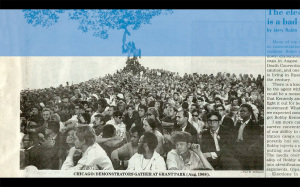 The group exhibition “First Person Plural: Empathy, Intimacy, Irony, and Anger” inquire into the emotional infrastructures of the present. What roles do emotions and affects play in forming collectivities and political belonging? What kinds of “we’s” do empathy, intimacy, irony, and anger assemble, and how do they determine which “first person plurals” someone is part of? And where does the affective power of art stand in these processes? The exhibition considers these questions along contemporary political, economic, technological, and social challenges, including the alarming surfacing of fascisms in public life. Pondering the emotional as an organizing force across political spectrums, emotions are understood not as individual mental states but as collective material and affective practices that are both shaped by and shape social life. The works in the exhibition challenge the familiar, divisive narratives of a “we,” such as the nation and the so-called “refugee crisis,” and allude to emotions as entry points for manipulation. Info: BAK, basis voor actuele kunst, Pauwstraat 13a, Utrecht, Duration: 12/5-22/7/18, Days & Hours: Wed-Sun 13:00-19:00, www.bakonline.org
The group exhibition “First Person Plural: Empathy, Intimacy, Irony, and Anger” inquire into the emotional infrastructures of the present. What roles do emotions and affects play in forming collectivities and political belonging? What kinds of “we’s” do empathy, intimacy, irony, and anger assemble, and how do they determine which “first person plurals” someone is part of? And where does the affective power of art stand in these processes? The exhibition considers these questions along contemporary political, economic, technological, and social challenges, including the alarming surfacing of fascisms in public life. Pondering the emotional as an organizing force across political spectrums, emotions are understood not as individual mental states but as collective material and affective practices that are both shaped by and shape social life. The works in the exhibition challenge the familiar, divisive narratives of a “we,” such as the nation and the so-called “refugee crisis,” and allude to emotions as entry points for manipulation. Info: BAK, basis voor actuele kunst, Pauwstraat 13a, Utrecht, Duration: 12/5-22/7/18, Days & Hours: Wed-Sun 13:00-19:00, www.bakonline.org
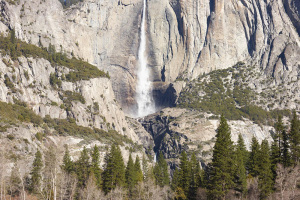 In “So long as they are wild”, Catherine Opie’s first solo exhibition in Hong Kong, are on presentation a series of photographs shot in one of the United States’ most revered and naturally beautiful locations, Yosemite National Park in California. In addition to the photographs, Opie will include a series of ceramic sculptures. This recent undertaking of sculpture began as a personal pastime but has evolved into an alternative aesthetic pursuit. Opie’s photographs push the boundaries of Adams’ well-known vistas through complex compositions that present the imagery practically beyond recognition, or allow for plainly naturalistic renderings. Shown in conjunction are Opie’s new ceramic sculptures of tree stumps. These are significant to the exhibition not only as the first sculptures the artist has created, but also as a tactical representation of the nature in her photographs. Sculpted from clay extracted from the earth, each work is formed by directly imprinting the soft clay on tree bark. Info: Lehmann Maupin Gallery, 407 Pedder Building, 12 Pedder Street, Hong Kong, Duration: 17/5-7/7/18, Days & Hours: Tue-Fri 10:00-19:00, Sat 11:00-19:00, www.lehmannmaupin.com
In “So long as they are wild”, Catherine Opie’s first solo exhibition in Hong Kong, are on presentation a series of photographs shot in one of the United States’ most revered and naturally beautiful locations, Yosemite National Park in California. In addition to the photographs, Opie will include a series of ceramic sculptures. This recent undertaking of sculpture began as a personal pastime but has evolved into an alternative aesthetic pursuit. Opie’s photographs push the boundaries of Adams’ well-known vistas through complex compositions that present the imagery practically beyond recognition, or allow for plainly naturalistic renderings. Shown in conjunction are Opie’s new ceramic sculptures of tree stumps. These are significant to the exhibition not only as the first sculptures the artist has created, but also as a tactical representation of the nature in her photographs. Sculpted from clay extracted from the earth, each work is formed by directly imprinting the soft clay on tree bark. Info: Lehmann Maupin Gallery, 407 Pedder Building, 12 Pedder Street, Hong Kong, Duration: 17/5-7/7/18, Days & Hours: Tue-Fri 10:00-19:00, Sat 11:00-19:00, www.lehmannmaupin.com
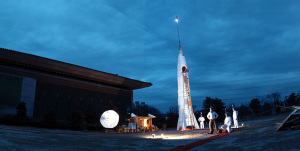 Gelatin is an Austrian art collective, they are known for creating sensational situations that create interactions between people. Their work is known for its humour, disorder, absurdity and the active participation of the public. In the exhibition “Vorm-Fellows-Attitude”, Gelatin explores the human condition in an overtly playful manner. Their point of departure is the value of taboo-breaking confrontation and the liberated, light-hearted perspective that we have as young children. Gelatin invites visitors to step into this uninhibited world, to leave behind their adult identity and to feel like children again. This exhibition follows a now-established tradition within the Museum Boijmans Van Beuningen of giving the stage – and total artistic freedom – to internationally-reputedartists as they exhibit within a major Dutch institution for the first time. Info: Curator: Francesco Stocchi, Museum Boijmans Van Beuningen, Museumpark 18, Rotterdam, Duration: 19/5-12/8/18, Days & Hours: Tue-Sun 11:00-17:00, www.boijmans.nl
Gelatin is an Austrian art collective, they are known for creating sensational situations that create interactions between people. Their work is known for its humour, disorder, absurdity and the active participation of the public. In the exhibition “Vorm-Fellows-Attitude”, Gelatin explores the human condition in an overtly playful manner. Their point of departure is the value of taboo-breaking confrontation and the liberated, light-hearted perspective that we have as young children. Gelatin invites visitors to step into this uninhibited world, to leave behind their adult identity and to feel like children again. This exhibition follows a now-established tradition within the Museum Boijmans Van Beuningen of giving the stage – and total artistic freedom – to internationally-reputedartists as they exhibit within a major Dutch institution for the first time. Info: Curator: Francesco Stocchi, Museum Boijmans Van Beuningen, Museumpark 18, Rotterdam, Duration: 19/5-12/8/18, Days & Hours: Tue-Sun 11:00-17:00, www.boijmans.nl
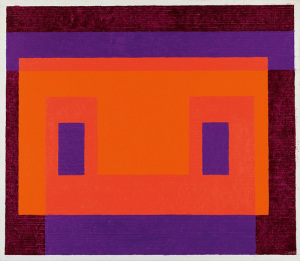 The exhibition “Josef Albers in Mexico” illuminates the relationship between the forms and design of pre-Columbian monuments and the art of Josef Albers. The presentation features a selection of rarely shown early paintings, iconic canvases from Albers’s “Homage to the Square” and “Variant/Adobe” series, and works on paper. The exhibition also includes a rich selection of photographs and photocollages, many of which have never before been on view and were created by Albers in response to frequent visits to Mexican archaeological sites beginning in the 1930s. With letters, studies, and unseen personal photographs alongside works drawn from the collections of Solomon R. Guggenheim Museum, New York, and the Josef and Anni Albers Foundation, the exhibition presents an opportunity to learn about the least known aspect of his practice, photography, offering new perspective on his most celebrated abstract works. Info: Curator: Lauren Hinkson, The Peggy Guggenheim Collection, Palazzo Venier dei Leoni, Dorsoduro 701, Venice, Duration: 19/5-3/9/18, Days & Hours: Daily 10:00-18:00, www.guggenheim-venice.it
The exhibition “Josef Albers in Mexico” illuminates the relationship between the forms and design of pre-Columbian monuments and the art of Josef Albers. The presentation features a selection of rarely shown early paintings, iconic canvases from Albers’s “Homage to the Square” and “Variant/Adobe” series, and works on paper. The exhibition also includes a rich selection of photographs and photocollages, many of which have never before been on view and were created by Albers in response to frequent visits to Mexican archaeological sites beginning in the 1930s. With letters, studies, and unseen personal photographs alongside works drawn from the collections of Solomon R. Guggenheim Museum, New York, and the Josef and Anni Albers Foundation, the exhibition presents an opportunity to learn about the least known aspect of his practice, photography, offering new perspective on his most celebrated abstract works. Info: Curator: Lauren Hinkson, The Peggy Guggenheim Collection, Palazzo Venier dei Leoni, Dorsoduro 701, Venice, Duration: 19/5-3/9/18, Days & Hours: Daily 10:00-18:00, www.guggenheim-venice.it
